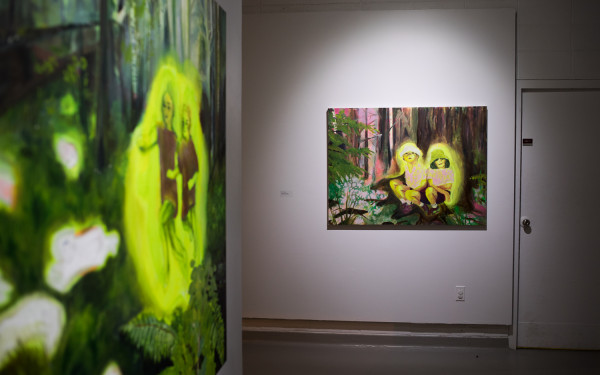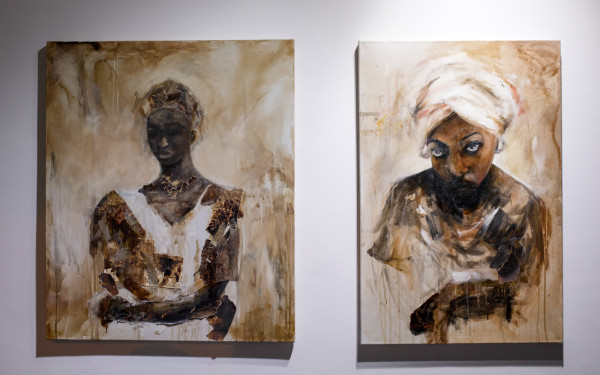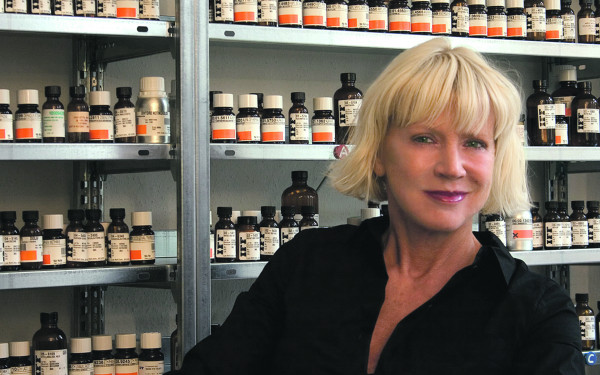Theran Seaton Collected Dolls for Ten Years and Turned Them Into Art
Using Dolls and Colourful Woodcuts to Celebrate the Beauty of Blackness
There were six brightly coloured prints of woodcuts of a woman’s head on the back wall of the Visual Arts Visuels Gallery. They were almost impossible to miss. The lines composing the back of her head, and braids are mesmerizing and powerful, leading to the effect of creating a picture within a picture.
Theran Seaton is the artist responsible.
Seaton exhibited her work in a gallery for the first time this November at the VAV. The third year Concordia fine arts student displayed two pieces in the Hyper Real: Black History Exhibition and Event Series.
Seaton notes that the process of braiding hair is similar to the process of creating woodcuts, both being lengthy and requiring precision. Her work explores her relationship to her hair, as well as the larger societal relationship to it.
“The print is a piece of art but so is the carving itself. It’s almost like a way of getting two pieces of art,” she said.
“If you carve something out, there’s really no going back on it. If you carve something up that you don’t want carved you just have to embrace the happy accident with it. I almost felt like it was a really raw way of making my art a material,” Seaton continued.
She said she has an optimistic view of life, not letting small “mistakes” in her woodcuts drag her down, or obsessing over them.
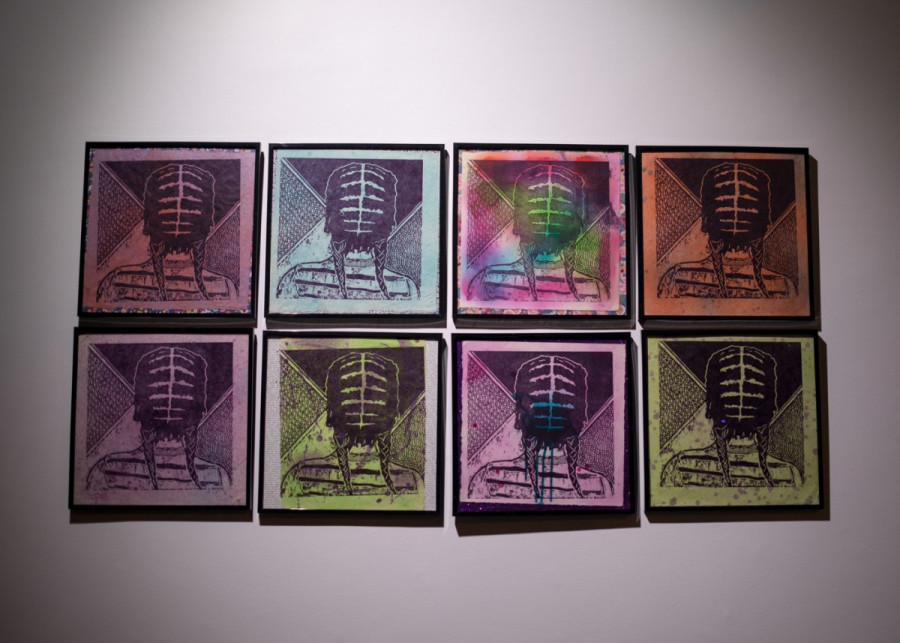
“If you took a little bit too much matter, it’s all great. A lot of the time, as artists we fixate on little things but there’s a whole bigger picture and I think it’s about embracing your screw ups or your downfalls,” Seaton said.
Her second work is an installation, raised on a table with a delicate lace ivory tablecloth. It is home to four dolls with wonderful dark skin, a nest with little birds inside, faux moss covered stones, and has colourful fake flowers strewn around the floor.
All of the dolls sported brightly coloured clothing, made by Seaton. The doll on the far right is wearing a furry lime green coat and a grey camo headscarf, making her look like a cool girl you might see walking down Ste. Catherine St.
Seaton explained she loves bright colours, which is evident in her work and serves to make it stand out from the others displayed in the Hyper Real: Black History Exhibition and Event Series.
“I like working with what you’ve got,” said Seaton. This attitude is demonstrated in her installations with the dolls, which was made from salvaged materials.
Seaton is a collector who sees potential and value in items others have discarded. She collects buttons, as well as dolls. Seaton has collected the latter for around 10 years.
“Everything for me has a little bit of value. If somebody throws it away I want to know why they’re throwing it away [and] if it’s salvageable,” said Seaton, who loved playing with Barbies as a child with her younger sister.
Seaton has Carribean heritage from her father and Italian heritage from her mother.
“Growing up I didn’t actually have any Black dolls,” she explained. This led her to dye their hair dark so they would more closely resemble her and her loved ones she added.
“Every now and then I’d be walking around and I’d see a Black doll disrobed, and wonder, why is that doll there. I never had that growing up, so in many ways I was saving them, taking them out of their environment and giving them a new one. That’s how I decided to start the installation. I had all of these dolls that I had accumulated and I was like ‘what could I do with them?’”
“I really did see it as me saving them and giving them a new environment, she continued, “instead of being underneath a trunk or on the corner, where no one wanted them—but I did.”
You can check out more of her work on Instagram at theran.sativa.

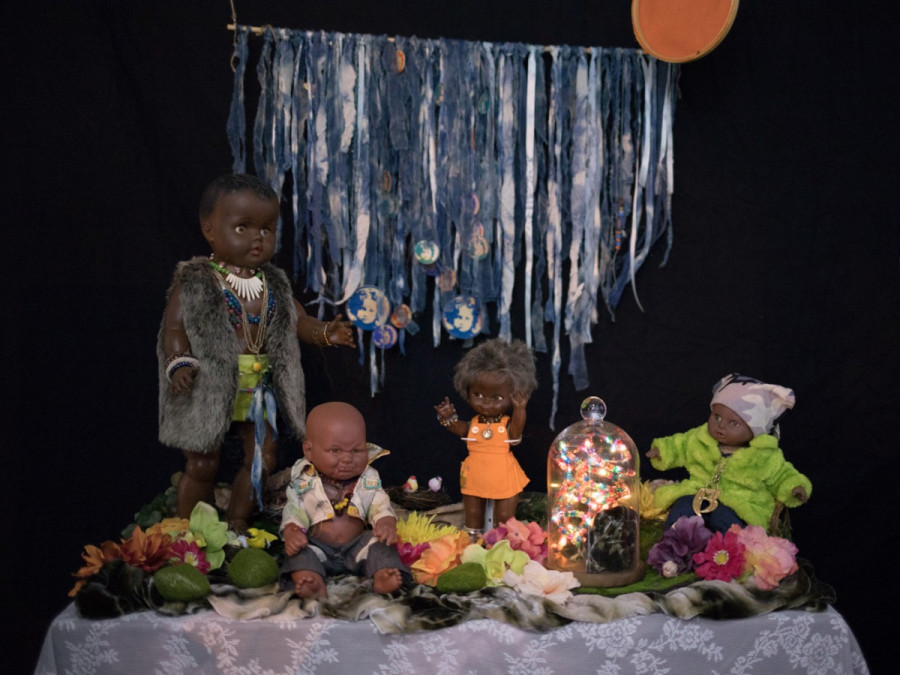
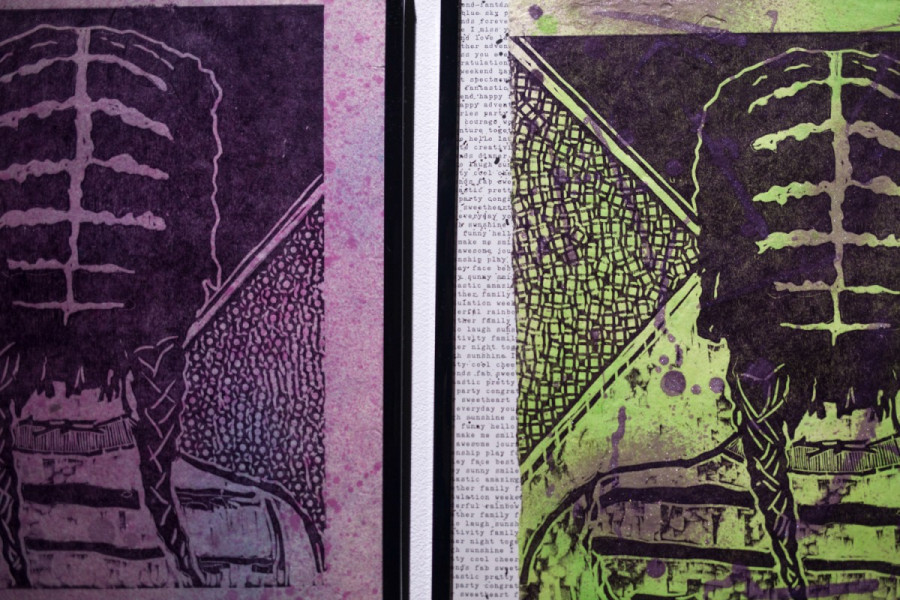
_600_832_s.png)

